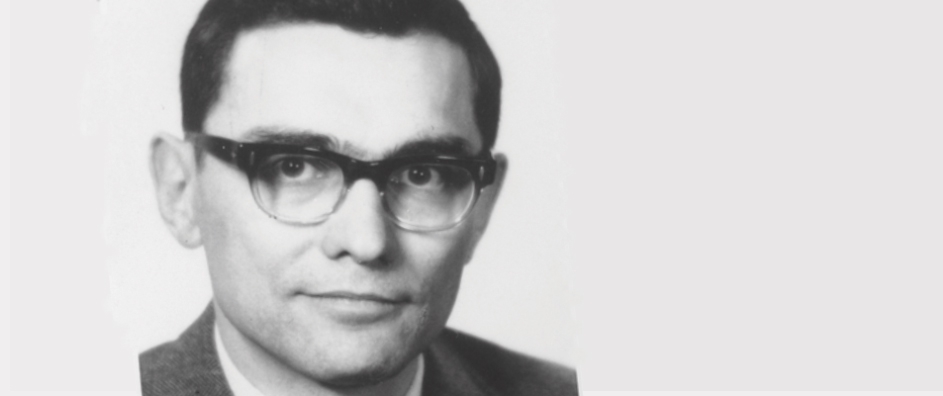The views expressed in our content reflect individual perspectives and do not represent the authoritative views of the Baha'i Faith.
Do you realize that you are standing on the shoulders of giants? Do you know who those giants were?
We all benefit from the advances, discoveries and social changes made by the giants who lived before we came along. We metaphorically stand on their shoulders, because their genius, their tremendous achievements and their hard work allowed us to progress to the point where we stand today.
I recently had the opportunity to attend a weekend of presentations at Arizona’s Desert Rose Baha’i Institute dedicated to the life and memory of a man whose faith and dedication to developing a dramatic and revolutionary new educational model had a profound impact on me, and on the world.
In a sold-out program that drew people from around the country, the inspirational story, mostly shared in personal remembrances, lauded the life and work of Daniel C. Jordan, with one of the participants stating that Jordan was a giant on whose shoulders many now stand as they attempt to spread his vision. Perhaps I should pluralize that to visions—he was also referred to as a “Renaissance Man” due to the wide variety of his talents, interests and efforts.
To “stand on the shoulders of giants” infers that your own vision is both lengthened and widened based on what you have gleaned from your parents, teachers, philosophers or prophets—your giants. You take their ideas and lessons and not only put them into practice, but expand on them.
Dr. Jordan, charmingly referred to as Dan’l by his Irish wife, Nancy, and known as Dan to everyone else, earned a bachelor’s degree at age 17 from the University of Nebraska, and the following year became the first Rhodes Scholar in music from the United States. His initial goal: to become a concert pianist. With the freedom at Oxford to attend any lectures, even if they aren’t in your own field of study, the young man with a huge thirst for knowledge drank in a wide variety of information. He developed a fascination with the philosophy of Carl Jung, and he also discovered the Baha’i Faith, which sparked a fire within his soul.

Dr. Daniel C. Jordan
All these experiences, academic and spiritual, led Dan to a change of direction. After receiving his second bachelor’s degree from Oxford in the composition, theory, and history of music, he went on to earn his Ph.D. in Human Development with specialization in social anthropology and psychology from the University of Chicago. His unique thesis was the creation of a ballet, Metamorphosis of the Owls, which intrigued those working in the arena of psychology and mental health with its exploration of life, death, hope, fear, hatred, aspiration and ultimately rebirth.
Dan chose a career in education. He combined all the various elements of knowledge he’d accumulated, including the tenets and principles of his Faith, and came up with a unique, holistic educational model which came to be known as the ANISA Project. It began at the University of Chicago and then moved to the University of Massachusetts at Amherst and finally to National University in Vista, California—but unfortunately the program dissolved following Dan’s untimely death in 1982 at the age of 50.
The ANISA program ended in an official capacity, but many of the students who studied it used the lessons they’d learned in their own educational efforts, whether in schools they developed based on those principles, or by applying them as best they could in public schools and in the Montessori system. Today, anyone wanting to research Dr. Jordan’s educational philosophy can do so at Stanford University, which now houses his papers.
Devoted to helping all people, not just children, learn to actualize their potential, Dan lectured and wrote extensively, including a very popular paper turned into an article that became a brochure titled Becoming Your True Self. [It can be read online at bahai-library.com.] It exemplifies what Dan required of his teachers—to know and develop their true selves, actualize their own potential, and then do the same for their students.
Dr. Donald Streets, Dr. Jordan’s ANISA colleague and long time educator, said, “The ANISA Model progressively moves education into a sound trajectory of responsible improvement that eventually can warrant education and educational practice justifiably being called a science. I believe that Dan Jordan’s contribution to an understanding of human development and its import for education will more than equal the great scholarly contributions of Descartes, Galileo, Einstein, and others who had to fight their way to getting their incredible breakthroughs in knowledge known, understood, and eventually appreciated by humanity.”
Attendees at this special session included Dan’s wife, daughters, niece, fellows in developing and teaching ANISA, students, neighbors, and friends. All of them kept bringing up two common topics: Dan’s sense of humor and playfulness, and his warmth and charisma. Mostly, though, they focused on the inspiration Dan Jordan drew from the Baha’i teachings:
According to the statement of philosophers the difference in degree of humankind from lowest to highest is due to education …. Education makes the ignorant wise, the tyrant just, promotes happiness, strengthens the mind, develops the will and makes fruitless trees of humanity fruitful. Therefore in the human world some have attained lofty degrees while others grope in the abyss of despair. Nevertheless the highest attainment is possible for every member of the human race even to the station of the prophets. This is the statement and reasoning of the philosophers. – Abdu’l-Baha, Foundations of World Unity, p. 55.
Just as the Baha’i teachings do, the ANISA Model seeks to elevate each individual, to encourage and help them identify and fulfill their individual potential to the degree each is capable, in order that they contribute their talents and skills to an ever-advancing civilization.
Each of these people touched in some way by Dan Jordan—even those who didn’t know him personally—now stand on his shoulders, affected by his philosophy, his insights and his profound love for humanity. One is Teresa Langness whose Full-Circle Learning program I wrote about previously.
















Comments
Sign in or create an account
Continue with Googleor